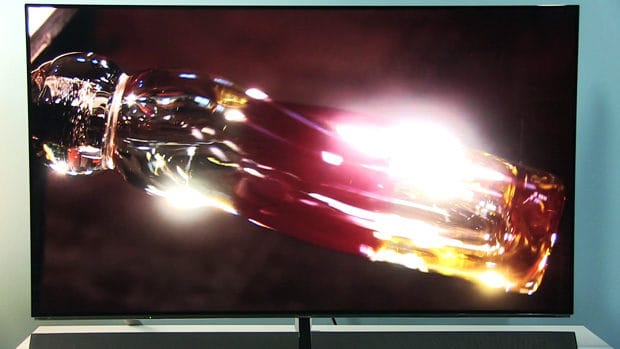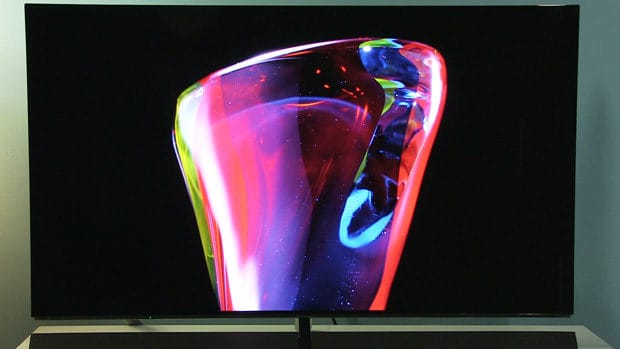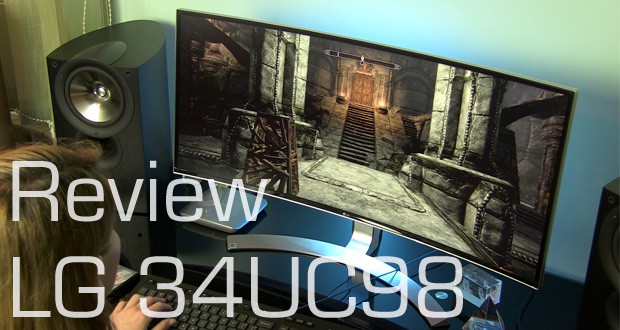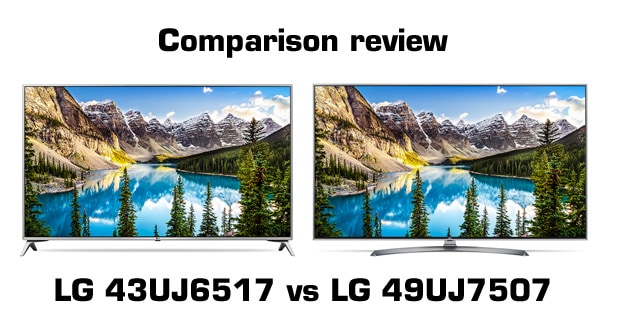Picture quality
Picture analysis and calibration performed using Portrait Displays Calman 2017 Ultimate for Business software, SpectraCal C6 colorimeter and VideoForge and Murideo SIX-G pattern generator.

TV tested with software version 3131-10000-000504-00200a060019.
| Factory characteristics | Value | Grade* | Comment |
| ANSI contrast
(factory Movie SDR, 200 cd/m2 peak luminance) |
infinite | 4 | Excellent, in line with OLED panel technology. |
| ANSI black level – SDR [cd/m2] | 0.000 | 4 | Excellent, in line with OLED panel technology. |
| Peak luminance in SDR [cd/m2] | 430 | 3 | Note: measured with 18% of the screen covered, for more values see below |
| Peak luminance in HDR [cd/m2] | 704 | 3 | Note: 10% of the screen covered |
| Peak luminance in HDR after 1 minute [cd/m2] | 701 | 4 | In this section difference in luminance is graded, in the ideal case, luminance should not fall lower than 5% of initial measurement. |
| Greyscale errors (SDR)
(calibrated state is < 3) |
2.14 | 4 | Biggest error at 80%. |
| Color errors (SDR)
(calibrated state is < 3) |
0.82 | 4 | Biggest error on red color. |
| Rec.709 coverage (CIE 1976 u’v’) | 100% | 4 | Acceptable range is 97%+ |
| DCI-P3 coverage (CIE 1976 u’v’) | 96.8% | 4 | For more results check this overview. |
| Rec.2020 coverage (CIE 1976 u’v’) | 71.5% | (info) | Just for information |
| Calibration controls | / | 4 | Gamma and White Balance 10 points, WB for dark and bright, CMS |
| Average: | 3.80 | excellent | |
Note: unless mentioned differently, all factory values from the most accurate preset, in this case Professional 1.
* – grades 1-4, 1 = bad, 2 = average, 3 = good, 4 = excellent
From the table above it is clear that Panasonic 65EZ1000E is an excellent TV when it comes to color accuracy. This is because there are several picture presets which are factory calibrated. These are Professional Photo, THX Cinema, THX Bright Room, True Cinema and both Professional presets. Despite this, TV still comes in poorly adjusted Normal preset so I warmly recommend moving away from it as soon as the initial installation is finished.

For SDR content, every aspect of the picture is on the very high level – greyscale and color errors are the lowest I have ever measured out of the box and gamma is following precisely value 2.2/BT.1186 in Professional 1/2 presets. Still, 65EZ1000E has a wide array of controls to fine-tune different picture aspects, which I did using Portrait Displays CalMAN 2017 software. To make things even easier, I did AutoCal – automatic calibration process where CalMAN directly communicates with the TV and adjusts the picture to the selected level. For SDR calibration, this worked like a charm and no intervention from my side was needed.
From the luminance results, it is clear that 2017 OLED panel from LG Display is used on 65EZ1000E. In Dynamic mode, I measured peak luminance as high as 871 nits on 2% screen coverage and in SDR luminance of around 400 nits or higher is whether the screen is 2% or 25% covered in white. Above 25% coverage, luminance drops, coming down to around 140 nits in SDR and 146 nits in HDR just like I measured on LG’s 2016 65C6 OLED TV.
Good luminance results guarantee punchy and dynamic images, especially for HDR content. For SDR, high luminance screen allows enjoying picture even if the ambient is bright.
TV covers 100% of Rec.709 and almost 97% of DCI-P3 color gamut. This guarantees ideally accurate colors that are not too colorful or not looking natural, which is great if you want to see the movie exactly as the director intended.

65EZ1000E also comes calibrated in HDR presets. The two THX presets are well adjusted, but the crown should be split between Professional 1 and 2 presets as they were perfectly adjusted. Greyscale was so precise that only at 70% it was slightly above the limit (3.5 and the limit is 3). Together with precise mapping of DCI-P3 and Rec.709 in Rec.2020 container, HDR picture was highly compelling and the best I have seen so far.
You can get my settings after calibration by visiting my Payhip store >>
![]()
Panel quality and backlight features
| Characteristic | Grade* | Comment |
| Backlight uniformity | 4 | excellent uniformity, except in near-black where thin vertical and horizontal streaks are visible (not distracting) |
| Dirty screen effect (DSE) | 4 | almost invisible |
| Screen reflections | 3 | semi-glossy screen with filter, moderately reduces glare and reflections |
| Viewing angles | 4 | ideal |
| Anomalies | 4 | vertical stripes in near-black area, rarely visible in reality |
| Global/Local dimming | 4 | no issues |
| Average: | 3.83 | excellent |
* – grades 1-4, 1 = bad, 2 = average, 3 = good, 4 = excellent
![]()
Signal processing
| Characteristic |
Value | Grade* | Comment |
| Motion resolution (Monoscope test, max. 1080) | 650 max. | 3 | typical result for a 120 Hz OLED LCD TV, Black Frame Insertion does not further improve the result |
| Motion resolution (visual) | / | 4 | excellent, short trails behind objects, very good legibility of text in motion, without significant increase of blur in dark scenes |
| 24 Hz playback | / | 4 | excellent, smooth playback with small amount of judder (judder reduction available) |
| Scaling | / | 4 | excellent scaling for SD and HD content |
| Interlaced signals | / | 3 | passes 2:2 and 3:2 1080i60, but failed on 2:2:2:4, 2:3:3:2, 3:2:3:2:2, 5:5, 6:4 and 8:7 (very rare in reality) |
| Judder reduction | / | 3 | available, intensity can be manually adjusted (IFC mid and max introduce artefacts) |
| Color Upsampling | / | 3 | without stair-stepping effect |
| Reduction of noise | / | 3 | very effective for noise, average MPEG noise reduction |
| Banding | / | 4 | excellent, without steps |
| Average: | 3.44 | excellent | |
* – grades 1-4, 1 = bad, 2 = average, 3 = good, 4 = excellent
![]()
Picture quality – overall
| Overall | Grade* |
| 1. Factory picture and calibration | 3.80 |
| 2. Panel quality | 3.83 |
| 3. Signal processing | 3.44 |
| Total score: | 3.69 |
* – grades 1-4, 1 = bad, 2 = average, 3 = good, 4 = excellent
Of all the TVs I have tested to date, Panasonic TX-65EZ1000E scored the highest in my picture quality tests. This is thanks to precise factory calibration, fantastic panel characteristics and excellent signal processing. No matter what type of content I watched during the test, from highly compressed standard-def broadcast, streaming or UHD Blu-ray, TX-65EZ1000E delivered truly outstanding images.

Being an OLED TV, it does not come as a surprise that TX-65EZ1000E can show the picture of infinite contrast and beautiful colors from wide viewing angle. This is what competitor’s OLED TVs can display too. However, where Panasonic shows advantage is in how accurately picture follows reference values in terms of greyscale and gamma. It is the best I’ve seen so far on any consumer TV. Black and white scenes are rendered beautifully, clean and without any color standing out and affecting the neutrality of greys. Gradations are smooth and natural, no matter if the scene is static or dynamic, bright or dark.

Colors are nothing short of perfection – especially when content with Wide Color Gamut (WCG) appears on the screen. Despicable Me 2 and the Revenant on the UHD Blu-ray showed how equally well TX-65EZ1000E can handle both very bright and colorful content but also dimmer scenes with pale colors. I was surprised how well the colors looked in Despicable Me 2 as this is an Academy Flat 1.85:1 content that covers almost the entire screen – all scenes had very punchy colors and brightness did not suffer. For sure that LCD TVs with the latest generation of Quantum Dots such as Samsung “QLED” line are capable of showing higher color volume, but in reality, modern OLED TVs are more than capable of colorful images.
TV did not suffer from loss of details either in dark or bright areas. In addition, precise Contrast and Brightness controls allow to precisely adjust both ends of the spectrum, which is more important in HDR than in SDR due to tone mapping. Speaking about it, I was pleased with how the TV handled highlights roll out – it was nicely balanced between picture brightness and details in bright. Still, if you want more details in highlight, by reducing Contrast control you can get achieve this. Just bear in mind that by reducing Contrast you also reduce peak luminance of the display.

2017 brings brighter OLED TVs and TX-65EZ1000E is a proof of that. This is the brightest OLED TV I’ve seen so far and in combination with perfect blacks, this was more than enough for highly convincing HDR effects. I watched Batman v Superman: Dawn of Justice as it has several great scenes to show off HDR effects. Thanks to pixel precision, perfect blacks and improved peak luminance, the effects such as fire and explosions looked more convincing than on even the best LCD TVs with HDR since no halo effect or brightness variations were visible. The same scene on Philips 65PUS7601 with Full Array Local Dimming (FALD) suffered from mentioned patches of increased peak luminance (especially visible if you are sitting little off-axis – no such issues on OLED TVs) which occasionally can be distracting, for example, if subtitles are displayed.

Motion resolution is great and together with barely noticeable Dirty Screen Effect (DSE), watching sports was excellent on this TV. Especially impressive was football in Ultra HD resolution and in 50 frames per second, showing the incredible amount of details in the picture together with great motion sharpness.
Playback of 24p movie content was great on previous generations of Panasonic TVs and so is the case on the TX-65EZ1000E. With Intelligent Frame Creation set to Min, you can experience movie content exactly as the director intended and as you would see it in the cinema. Smooth playback with the only occasional small amount of judder (when bright objects move across the screen, such as at the beginning of Prometheus). In UHD judder is more noticeable, but still within the acceptable limit. You can also activate soap-opera effect.

Upscaling is done perfectly, especially for HD content that sometimes looks like UHD. Smooth edges, clean gradations, no generated noise – overall, excellent result. Interlaced SD content is as good as it gets, with clean edges and decent sharpness which you can manually fine-tune to the desired level.
So far everything seems to be great, is this a perfect TV without any flaw? Well, nothing is perfect so let’s mention what I did not like. First, I do not like that TV of this class comes in poorly adjusted Normal picture preset for home usage. An owner should not this about which of four(!) Cinema presets he should use to get the best picture quality. If TV is THX certified, it should be in THX preset by default.

First, I do not like that TV of this class comes in poorly adjusted Normal picture preset for home usage. An owner should not spend time thinking which of four(!) Cinema presets he should use to get the best picture quality. If TV is THX certified, it should be in THX preset by default.
My second complaint is towards the lack of Dolby Vision support. Even though I have yet to see how content looks in Dolby Vision, judging from the first reviews, it certainly has an advantage over HDR-10.
My third complaint goes to the panel reflections. Even though a filter is implemented to reduce glare, in the semi-bright room I am able to see myself quite clearly on the screen and this is something I, personally, do not like. In really bright room situation is even worse. Not everyone will watch the TV in an environment with controlled ambient light such as a studio, so a better filter (or a matte screen) would be a plus in my book.
I also do not like that Panasonic went with glossy cover to hide cable going from the soundbar to the TV. Since this cover is under an angle and below the center of the screen, you can see reflections on its surface. My opinion is that Panasonic should have supplied two covers – one glossy and the other with the matte texture. That way user could choose which one to use.
At the very end of the “I do not like” list, I am placing thin horizontal/vertical streaks in the near-black area (for example pure grey pattern is not uniform but has like a thin grid pattern). The reason why I place it at the very end is that this is something you will very rarely see in reality and even if you see it, it will not be distracting. The improvements are visible in this area compared to previous generations, but for now, all OLED TVs are not perfect in this regard.
Despite the mentioned flaws from my point of view, TX-65EZ1000E is a splendid TV with reference quality picture.
![]()







Recenziju na stranu, volio bih da je tekst na HR jeziku jer na ENG je mogu pročitati na AVForums-u, Rtings-u, …
Thanks for review. So your opinion is that this TV has the best picture processing, and SD program upscalaing,, from the 4K TVs you tested?
About screen glare,, have you any experience with Anti-glare film? yes,, I understand that mounting a film to 65 inch monitor is not easy :)
wrgb is wrong,for most acurate color only pure rgb,nothing less or nothing more.
Kind regards
price is too high at this time